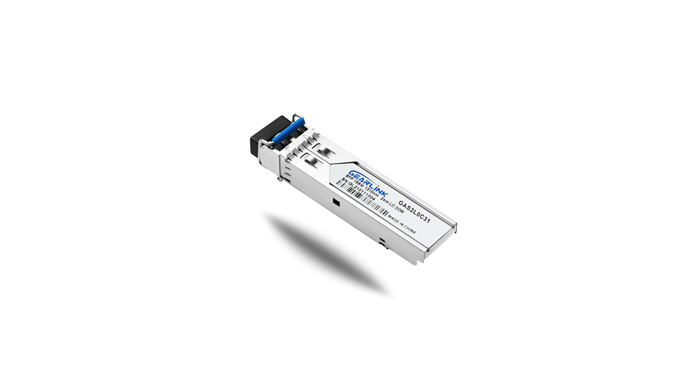QSFP 40G 1310nm 40km LC Transceiver
(2023年07月19日)https://www.gearlinkoptic.com/products/qsfp-40g-1310nm-40km-lc-transceiver/
GLQ5L0C31 is designed to operate over single-mode fiber system using 4X10 CWDM channel in 1310 band and links up to 30km. The module converts 4 inputs channel of 10Gb/s electrical data to 4 CWDM optical signals, and multiplexes them into a single channel for 40Gb/s optical transmission. Reversely, on the receiver side, the module optically de-multiplexes a 40Gb/s input into 4 CWDM channels signals, and converts them to 4 channel output electrical data.
The central wavelengths of the 4 CWDM channels are 1271, 1291, 1311 and 1331 nm. It contains a duplex LC connector for the optical interface and a 38-pin connector for the electrical interface. Single-mode fiber (SMF) is applied in this module. This product converts the 4-channel 10Gb/s electrical input data into CWDM optical signals (light), by a 4-wavelength Distributed Feedback Laser (DFB) array. The 4 wavelengths are multiplexed into a single 40Gb/s data, propagating out of the transmitter module via the SMF. The receiver module accepts the 40Gb/s optical signals input, and de-multiplexes it into 4 CWDM 10Gb/s channels. Each wavelength light is collected by a discrete photo diode, and then outputted as electric data after amplified by a TIA.
The product is designed with form factor, optical/electrical connection and digital diagnostic interface according to the QSFP+ Multi-Source Agreement (MSA) and compliant to 40G QSFP+ LR4 of IEEE 802.3ba.
Technical Specification Of QSFP 40G 1310nm 40g dwdm, 40g dwdm transceiver
Absolute Maximum Ratings
ParameterSymbolMin.Typ.Max.UnitNote
Storage TemperatureTs-40-85ºC
Relative HumidityRH5-95%
Power Supply VoltageVCC-0.3-4V
Signal Input VoltageVcc-0.3-Vcc+0.3V
Recommended Operating Conditions
ParameterSymbolMin.Typ.Max.UnitNote
Case Operating TemperatureCase0-70ºCWithout airflow
Power Supply VoltageVCC3.133.33.47V
Power Supply CurrentICC-1060mA
Data RateBR10.3125GbpsEach channel
Transmission DistanceTD-30km
Coupled fiberSingle-mode fiber9/125um SMF
What is the difference between a CWDM optical transceiver and a common optical transceiver ?
The difference between CWDM active optical transceiver and ordinary optical transceiver :
① Save more fiber resources
Compared with ordinary optical transceivers, CWDM optical transceiver s use fewer fibers. The CWDM optical transceiver multiplexes multiple signals of different wavelengths into one signal through a multiplexer, and then transmits it to the receiving end through a single optical fiber. The receiving end demultiplexes one signal into multiple different wavelengths through a demultiplexer. The signal is transmitted to the corresponding device. Ordinary optical transceiver s need to use one optical fiber to transmit one wavelength, and multiple optical fibers must be used to transmit multiple waves, so CWDM optical transceiver s save more fiber resources than ordinary optical transceiver s.
②Working wavelength is different
CWDM optical transceiver s have a total of 18 working wavelengths (1270-1610nm), each working wavelength interval is 20nm, and there is only one working wavelength for ordinary optical transceivers, commonly used are 850nm, 1310nm, 1490, 1550nm.
If you are looking for a reliable transceiver supplier, please choose us, and we will be your best partner.
- このできごとのURL:



コメント